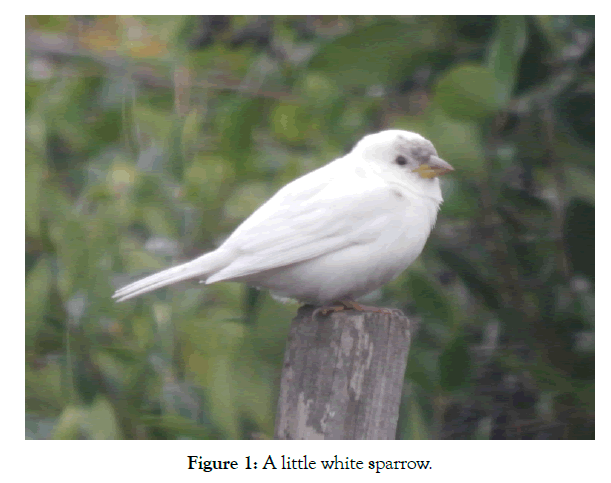Journal of Oceanography and Marine Research
Open Access
ISSN: 2572-3103
+44 1300 500008
ISSN: 2572-3103
+44 1300 500008
Letter to Editor - (2019)
The purpose of this piece is to propose an alternative to the practice of physical tagging of animals to study individual behavior. The act of physical tagging an animal of a specific group allows for tracking of that individual. It provides knowledge of individual behavior that cannot be obtained by observing the flocks, herds or swarms at large. However, physical tagging may alter the behavior of some animals, thus providing flawed information. Even comparatively benign observations can alter the individual’s behavior. For example, touching or close observation of nesting birds can cause the parents to abandon the nesting site, even if there are hatchlings in the nest.
It would be of value to marine biology, for example, to have a non-invasive tagging (NIT) tool that allows one to observe an individual of a group without ever physically tagging or directly encountering a specific member. For this discussion, a group may be a flock, swarm, herd or school.
A first principal test of this method was enjoyed in a residential backyard bird area with a bird feeder and birdbath. In addition to the joy of watching many different species of birds come to feed at different times, it was a flock of sparrows that provided the most captivating gauge for this research. That is because after seeing scrub-jays, robins, doves, and lots of little sparrows come and go over the past 15 years, to the researchers’ delight and surprise, for the past two years a little white sparrow has been visiting every day.
After taking his photo and discussing and sharing pictures with other researchers, it was concluded that he is not an albino. He has dark eyes and a dark patch on its forehead (Figure 1). This is a true rare white sparrow with, leucism, a condition where part or most of the animal’s pigmentation fails to develop.

Figure 1: A little white sparrow.
A clear distinction between albinism and leucism is in the eyes. They are red in albinism, but in leucism, the eyes retain their coloring and there can be patches of color throughout the body, coat or feathers. This particular bird retains a smear of coloring above its beak. Leucistic animals are rare. Although there have been quite a few recently sitings in the San Francisco Bay Area, white squirrels [1] and a white hummingbird [2], however, this is the first reporting of a white sparrow [3].
This method can be applied to ocean animals as well, thus making Non-invasive tagging a useful tool for oceanographers. It could well be a valuable tool for following individual behavior in large schools of fish. A leucistic animal of a group allows for natural tagging, using a natural feature of the animal’s color, or lack thereof. Natural tagging is non-invasive; as the animal is naturally tagged by its intrinsic pattern.
We postulate that all animal groups have leucistic members. We further postulate that leucism provides a natural non-invasive method of tagging individual animals within a large coherent group. Such natural tagging practice allows for the study of individual behavior within the group. We tested the second postulate using the little white sparrow to obtain data for individual behavior.
What did we learn?
The movement of birds within the sparrow’s flock appears chaotic at the bird feeder. Observing the group produced no particular pattern to eating or approach to the feeder. That is because all the birds looked the same and appeared to feed in a frenzy. However, when our focus was trained on the little white sparrow, a clear pattern emerged. There is a particular approach to the feeder: First, the little white sparrow lands in the trees and scopes out the feeder and area. Next, he move to the fence that is adjacent and close to the feeder. When an open feeding spot becomes available, he then moves in on the feeder. After he finishes feeding, the bird flies back into the trees to preen. The pattern may be repeated a few times until he has had his fill.
Moreover, after learning the pattern and observing a few birds in proximate to the little white sparrow, it became further clear that they were all following the pattern set by the little white sparrow. Moreover, the entire flock, moving from stage to stage in subgroups, appeared to follow the feeding pattern used by this little bird. Finally, this bird is neither a leader nor a follower. No special notice is paid to him by the rest of the flock. The method of NIT allowed us to follow him and thus his behavior, and ultimately the behavior of the flock. This led us to conclude that there is order in the feeding, gleaned from studying one non invasive tagged bird.
Citation: Lucas JN, Collins JM (2019) Non-Invasive Tagging (NIT) of a Member of an Animal Group, Flock or Swarm. J Oceanogr Mar Res 7:195. doi: 10.35248/2572-3103.19.7.195
Received: 18-Oct-2019 Accepted: 04-Nov-2019 Published: 11-Nov-2019
Copyright: © 2019 Lucas JN, et al. This is an open-access article distributed under the terms of the Creative Commons Attribution License, which permits unrestricted use, distribution, and reproduction in any medium, provided the original author and source are credited.